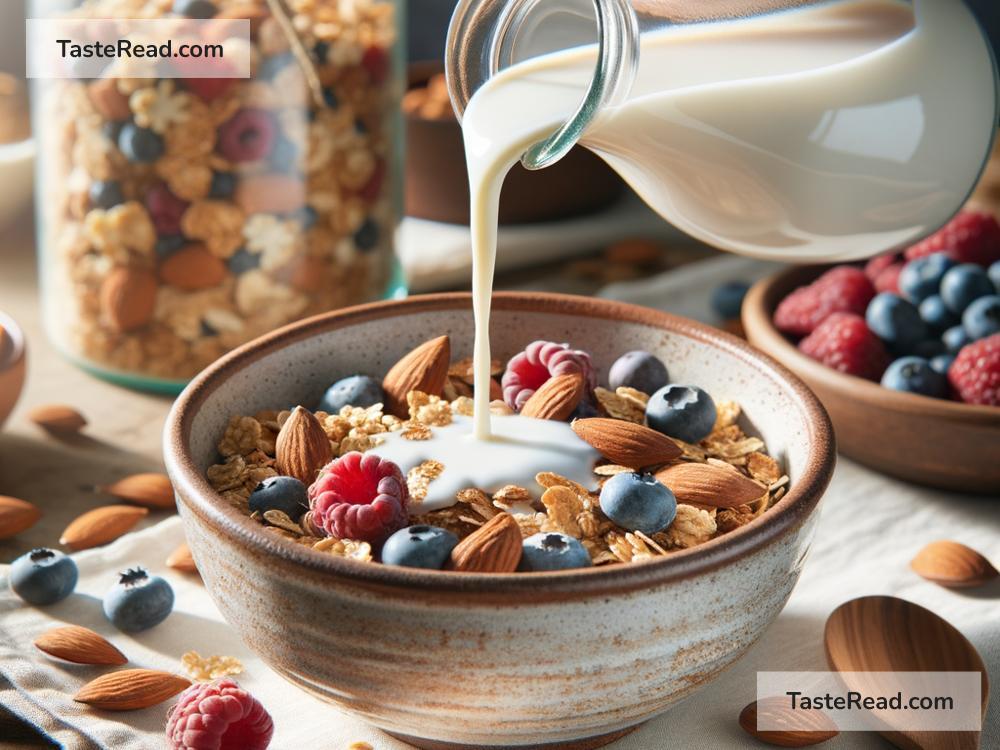Cooking with Renewable Plant-Based Dairy Alternatives: A Simple Guide
Whether you’re a seasoned chef or someone who’s just starting to explore the kitchen, cooking with renewable plant-based dairy alternatives can be a fun and exciting journey. With the growing awareness about the environmental impact of traditional dairy farming, more people are reaching for plant-based options not only for their health benefits but also for their minimal ecological footprint. This simple guide will help you understand how to cook with these innovative ingredients, ensuring that your meals are not just delicious, but also kind to the planet.
Why Plant-Based Dairy?
Before we dive into the cooking part, let’s quickly discuss why plant-based dairy is gaining popularity. For starters, it’s an excellent choice for those who are lactose intolerant or have allergies related to cow’s milk. Additionally, plant-based dairy products tend to be lower in saturated fats and free from cholesterol, making them a heart-healthy option. But perhaps most importantly, they are derived from plants, which require significantly less water, land, and other resources compared to raising animals for dairy. This makes them a more sustainable and environmentally friendly choice.
Types of Plant-Based Dairy Alternatives
The market is full of plant-based dairy alternatives, made from various sources. Here are some of the most commonly used ones:
-
Almond Milk: Known for its light texture and slightly sweet taste, almond milk is great for baking and works well in coffee and tea.
-
Soy Milk: Among the most nutritionally similar to cow’s milk, soy milk is a robust option for cooking and baking, offering a creamy texture.
-
Coconut Milk: With its rich and creamy consistency, coconut milk is perfect for soups, curries, and desserts. It adds a tropical flavor to dishes.
-
Oat Milk: Oat milk is celebrated for its smoothness and mild taste, making it a fantastic all-rounder for cooking, baking, and cereal.
-
Cashew Milk: This is another creamy alternative that blends seamlessly into sauces, soups, and smoothies, giving them a velvety texture.
Cooking with Plant-Based Dairy Alternatives
Now that we’ve covered the ‘why’ and ‘what,’ let’s get to the ‘how.’ Cooking with plant-based dairy alternatives isn’t complicated. In fact, in most cases, you can substitute plant-based milk for dairy milk at a 1:1 ratio. Here are some tips and ideas to get you started:
-
Baking: Whether you’re making pancakes, cakes, or muffins, you can easily replace cow’s milk with any plant-based milk. For a neutral flavor, almond or soy milk work best.
-
Creamy Sauces: Cashew milk is especially good for making creamy sauces. Its thick consistency and mild taste make it a great base for vegan Alfredo or béchamel sauce.
-
Soups: Coconut milk is your best friend when it comes to soups. It adds a rich creaminess to dishes like tomato soup or pumpkin soup without overpowering the flavors.
-
Smoothies: Virtually any plant-based milk can be used in smoothies. Choose based on your flavor preference, or mix and match to find your perfect blend.
-
Coffee and Tea: Oat milk is particularly popular for coffee and tea because it froths well and has a very subtle taste that doesn’t overpower your brew.
Tips for Cooking with Plant-Based Dairy Alternatives
-
Adjust the Sweetness: Some plant-based milks are sweetened. Use unsweetened varieties in savory dishes and adjust the sugar in your recipes if you’re using a sweetened version for desserts or beverages.
-
Be Mindful of Flavors: Every plant-based milk has its unique flavor. Consider how the taste will blend with your dish. For instance, coconut milk works wonderfully in curry but might not be ideal in a cheese sauce.
-
Experiment: Don’t be afraid to experiment with different plant-based milks to find what works best for your recipes. Cooking is an art, and swapping ingredients is a part of the creative process.
Embracing Plant-Based Alternatives
Switching to plant-based dairy alternatives is not only a step towards healthier eating but also a stride towards sustainable living. As our world moves more towards renewable and eco-friendly practices, incorporating plant-based ingredients into our cooking is a delicious way to make a difference. Whether you follow a vegan lifestyle or are simply looking to reduce your environmental footprint, these alternatives provide ample opportunities to explore new tastes and textures. So, grab that carton of almond, soy, coconut, oat, or cashew milk and let your culinary adventure begin!


